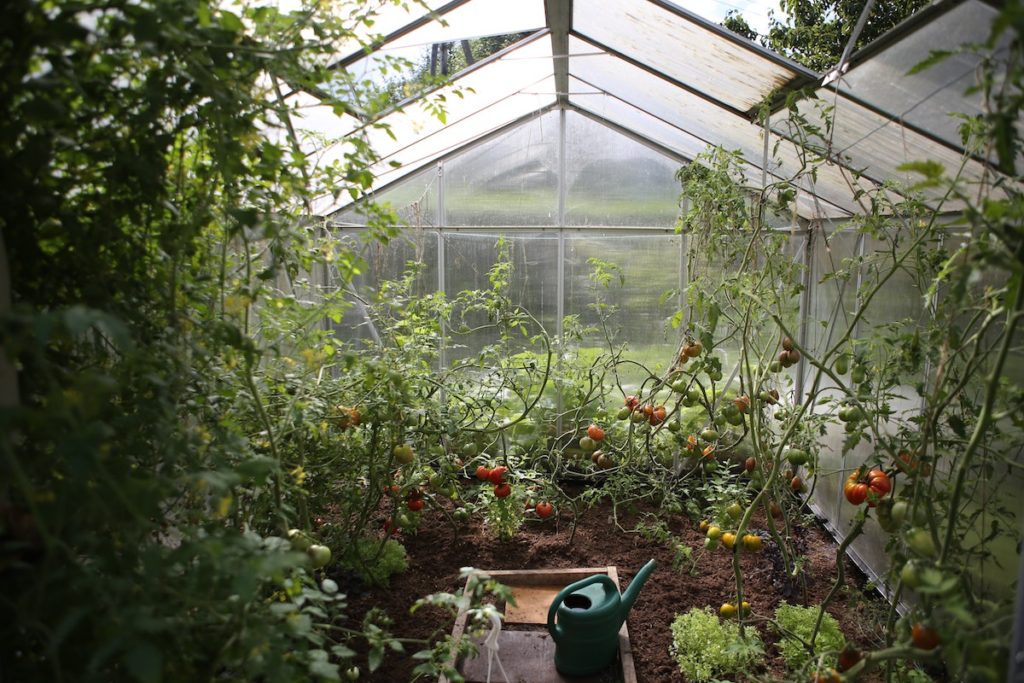Reducing greenhouse gas emissions is a topic that often comes up when talking about zero waste. But do you know what greenhouse gases are or how they contribute to your carbon footprint?
Climate change is happening. Experienced by increased intensity and frequency of weather patterns, for example, heatwaves, drought, wildfires, tropical storms, and flooding putting communities, natural ecosystems, and food security at risk. This severe weather is termed climate change and is a result of atmospheric warming due to increased greenhouse gases.
What are Greenhouse Gases?
The Earth’s atmosphere is made up of carbon dioxide (aka carbon, CO2), methane, water vapour, nitrous oxide, and ozone; known as greenhouse gases. These greenhouse gases absorb outgoing radiation from the earth and trap it in the atmosphere. The trapped radiation results in a natural warming effect called the greenhouse effect, similar to how clear glass keeps heat in a greenhouse.
Lucky for us, the natural warming of the atmosphere allows for life on earth. However, since the industrial revolution, atmospheric carbon has increased to levels higher than ever before, which correlates with increased average global temperatures over the same time period.
So why do we single out carbon? Carbon has the second-highest atmospheric warming potential, with methane taking the top spot. The burning of fossil fuels (oil, coal, and gas) contributes significantly to atmospheric carbon. The challenge is, fossil fuels are the lifeline of many human activities; however, we need to reduce carbon emissions to slow atmospheric warming, thus climate change.

What is a Carbon Footprint?
A carbon footprint measures the greenhouse gases emitted by an individual based on their daily habits and activities, such as the diet they consume, how they commute, and annual travel habits. You can determine your carbon footprint using this online calculator.
The average Canadian emits 16,000 kg of carbon per year, one of the highest in the world. In fact, it’s more than three times higher than the global average of 4,800 kg of carbon per year. Canada’s oil and gas industries contribute to the high per capita carbon footprint, accounting for 52% of Canada’s total greenhouse gas emissions.
So the question is can we reduce our annual carbon emissions? Yes, we can – but we are currently moving too slow. In industry, we need to see the biggest shifts in decarbonizing the energy and agriculture sectors.

5 Ways to Reduce Your Carbon Footprint:
For the average person, reducing your carbon footprint is understanding how your habits contribute on a larger scale, if your actions support the behaviours you wish to see, and aligning your behaviours with what you value.
Buy food locally and in season:
Food transported by air has the highest carbon footprint. So eating perishable fruits and vegetables, like berries, asparagus, or green beans, in the off-season contributes the highest carbon emissions. Thus, cut your emissions by eating seasonal fruits and vegetables from local farmers. Tip: preserve or freeze fruits and vegetables when they are in season to enjoy in the off-season! Also, you can cut down your meat consumption, opting for better quality (organic and local) over quantity (factory farmed).
Buy package free:
An easy way to reduce your carbon footprint is to buy bulk foods, fruits, and vegetables using reusable containers. Reusing containers for grocery purchases reduces the resources used upstream in the supply chain, for example, the energy and water used in the extraction, refining, manufacturing, distribution, and disposal of the packaging. Plastics are used for packaging more than any other application. Avoiding plastic altogether or reusing containers for bulk shopping reduces the need to produce new packaging, thus reducing emissions.
Avoid food waste:
Did you know 30% of the global food production goes to waste? Even worse, 25% of the global carbon emissions come from food production. So cut your carbon emissions by reducing your food waste. Prepare a list and take stock of what you have on hand before you go shopping. Buy ingredients that can be used in more than one dish so any leftovers can be used up and not tossed. Tip: buying bulk is great for portion control.
Change the way you clean your clothes:
Cleaning your clothes emits more than 50% of the carbon emitted throughout the manufacturing process. This is because washers and dryers emit the most emissions among household appliances. Manufacturers have designed newer energy-efficient models that use only a fraction of the energy of older appliances, so opt for an energy-efficient model when replacing. To reduce your laundry emissions, wash your clothes in cold water, in larger loads, and hang them to dry. In fact, you can reduce your CO2 emissions by 1,100 kg/year just by hanging your laundry to dry!
Support Reforestation:
This could be through a donation, buying carbon offsets, or advocating for old-growth forests. Carbon sequestration is nature’s way of removing atmospheric carbon. Trees absorb carbon from the atmosphere and store it in their leaves, branches, trunk, roots, or soil. Each year forests absorb and store large amounts of carbon. However, the amount of carbon absorbed decreases as deforestation and fossil fuel burning increase. Supporting reforestation and protecting old-growth forests will keep carbon stored instead of in the atmosphere.
Making small changes to your daily habits can reduce your carbon footprint. These are just a few examples. I’d love to hear your ideas! Reach out via email or tag us on Instagram!




